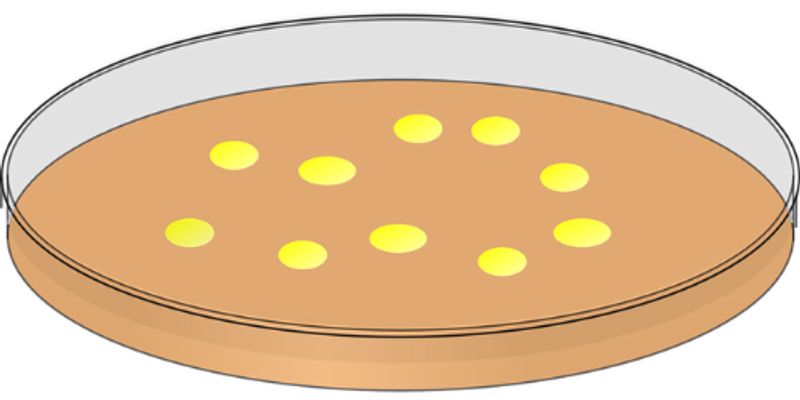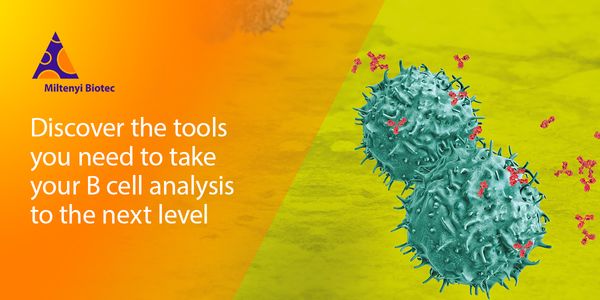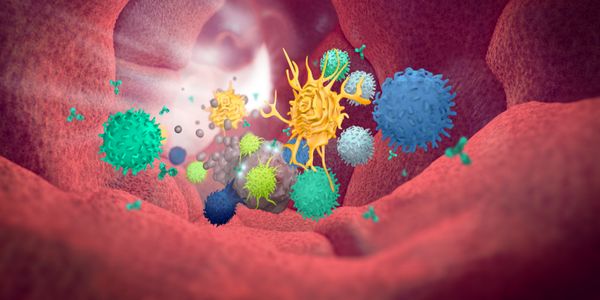Recombinant plasmid
Plasmids are small, circular strands of DNA located in the cytoplasm of a bacteria that can replicate independently. Recombinant plasmids are generated when a specific gene is inserted into a plasmid vector. Recombinant plasmids allow researchers to manipulate genes for biomedical research.
-
APR 06, 2022 | 11:30 AMThe vast structural diversity of proteins is responsible for their functional versatility, but also makes their expression and purification a demanding task. Tagging proteins with affinity t...OCT 14, 2021 | 8:00 AMDate: October 14, 2021 Time: 8:00am (PDT), 11:00am (EDT) The primary role of B cells is to secrete antibodies, boosting our adaptive immune responses, making them an essential part of our im...JUL 22, 2021 | 2:45 PMLearning Objectives: 1. CRISPR-Cas systems are naturally repurposes for non-canonical functions other than cleaving RNA and DNA 2. CRISPR RNA-guided transposases integrate donor DNA without...APR 20, 2021 | 4:30 PMInterest in cell and gene therapy-based disease prevention and treatment has increased rapidly over the last few decades, however there are still many hurdles to overcome and further progres...Speaker: Andrea O'Hara, PhDAPR 07, 2021 | 1:00 PMIn this fireside chat, we’ll discuss how gene editing protocols can benefit from long-read sequencing at various stages to optimize and enhance vector integrity, which cannot be addres...Speaker: Elizabeth Louie, Ph.D.NOV 19, 2020 | 8:00 AMDate: November 19, 2020 Time: 8:00am PST, 11:00am EST Monoclonal antibody-based drugs have shown great potential as a treatment for several cancers. At Miltenyi Biotec, we offer a complete wo...JUN 02, 2020 | 9:00 AMDATE: June 2, 2020 TIME: 9:00am PT, 12:00pm ET Osmolality is a well-established parameter for upstream bioprocessing, formulation, analytical development and QC applications throughout the m...APR 27, 2020 | 9:00 AMDATE: April 27, 2020 TIME: 9:00am PT, 12:00pm ET Recombinant adeno-associated virus (rAAV) is a small (25-nm) virus that is composed of a protein shell called a capsid and a single-stranded...DEC 11, 2019 | 7:00 AMDATE: December 11, 2019TIME: 7:00am PST, 10:00am EST An important part of the biopharma industry, Plasmid DNA is used as a gene-delivery vehicle for DNA vaccination and as a key...SEP 13, 2018 | 12:00 PMWhile rapid identification of pathogens, novel therapeutic interventions, and passive immunization have critical roles in disease control, none can substitute for pre-existing protective immu...
APR 06, 2022 | 11:30 AM
The vast structural diversity of proteins is responsible for their functional versatility, but also makes their expression and purification a demanding task. Tagging proteins with affinity t...
OCT 14, 2021 | 8:00 AM
Date: October 14, 2021 Time: 8:00am (PDT), 11:00am (EDT) The primary role of B cells is to secrete antibodies, boosting our adaptive immune responses, making them an essential part of our im...
JUL 22, 2021 | 2:45 PM
Learning Objectives: 1. CRISPR-Cas systems are naturally repurposes for non-canonical functions other than cleaving RNA and DNA 2. CRISPR RNA-guided transposases integrate donor DNA without...
APR 20, 2021 | 4:30 PM
Interest in cell and gene therapy-based disease prevention and treatment has increased rapidly over the last few decades, however there are still many hurdles to overcome and further progres...
Speaker:
Andrea O'Hara, PhD
APR 07, 2021 | 1:00 PM
In this fireside chat, we’ll discuss how gene editing protocols can benefit from long-read sequencing at various stages to optimize and enhance vector integrity, which cannot be addres...
Speaker:
Elizabeth Louie, Ph.D.
NOV 19, 2020 | 8:00 AM
Date: November 19, 2020 Time: 8:00am PST, 11:00am EST Monoclonal antibody-based drugs have shown great potential as a treatment for several cancers. At Miltenyi Biotec, we offer a complete wo...
JUN 02, 2020 | 9:00 AM
DATE: June 2, 2020 TIME: 9:00am PT, 12:00pm ET Osmolality is a well-established parameter for upstream bioprocessing, formulation, analytical development and QC applications throughout the m...
APR 27, 2020 | 9:00 AM
DATE: April 27, 2020 TIME: 9:00am PT, 12:00pm ET Recombinant adeno-associated virus (rAAV) is a small (25-nm) virus that is composed of a protein shell called a capsid and a single-stranded...
DEC 11, 2019 | 7:00 AM
DATE: December 11, 2019TIME: 7:00am PST, 10:00am EST An important part of the biopharma industry, Plasmid DNA is used as a gene-delivery vehicle for DNA vaccination and as a key...
SEP 13, 2018 | 12:00 PM
While rapid identification of pathogens, novel therapeutic interventions, and passive immunization have critical roles in disease control, none can substitute for pre-existing protective immu...










